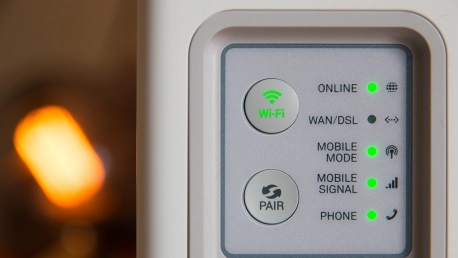Wi-Fi 6, the next-generation standard in Wi-Fi technology, made its big debut last year. Beyond basics like speed and range, the really important thing about Wi-Fi 6 is how it will reshape the way routers handle the growing number of connected devices in our homes and our offices. Here are the reasons why any business manager should consider upgrading to Wi-Fi 6 in 2020.
What Is Wi-Fi 6 and Why It Matters
Wi-Fi 6 is the latest generation of the Wi-Fi standard. The 802.11ax standard supports faster, more efficient performance from your router, and can enable it to handle a lot of simultaneous connections with multiple devices. To better understand which versions of Wi-Fi are faster and newer, the Wi-Fi Alliance has retroactively renamed the older standards: 802.11ac is now Wi-Fi 5, while 802.11n is now Wi-Fi 4.
According to an Intel blog post, 802.11ax is expected to:
- deliver up to 40 percent higher peak data rates for a single client device;
- improve average throughput per user by at least a factor of four in dense/congested environments;
- increase network efficiency more than fourfold;
- extend the battery life of client devices;
It goes without saying that, in order to obtain the speeds promised by the new standard, you must use Wi-Fi 6 compatible devices.
On April 23rd, FCC has approved a chunk of wireless spectrum called the 6GHz band for unlicensed use by Wi-Fi 6.
“The Federal Communications Commission adopted rules that make 1,200 megahertz of spectrum in the 6 GHz band (5.925–7.125 GHz) available for unlicensed use. These new rules will usher in Wi-Fi 6, the next generation of Wi-Fi, and play a major role in the growth of the Internet of Things. Wi-Fi 6 will be over two-and-a-half times faster than the current standard and will offer better performance for American consumers. Opening the 6 GHz band for unlicensed use will also increase the amount of spectrum available for Wi-Fi by nearly a factor of five and help improve rural connectivity,” the agency stated in an official news release.
3 Reasons You Should Consider Upgrading to Wi-Fi 6
Up to Four Times Better Wireless Performance in Dense or Congested Areas
The best-selling point for Wi-Fi 6 is that it can provide up to four times better wireless performance in dense or congested areas, compared to Wi-Fi 5 (802.11ac). This will benefit everyone as the Internet of Things becomes more established in homes and businesses, with the number of devices requiring connection to the Wi-Fi leading to increased wireless interference, particularly in urban areas. Wi-Fi 6 is also compatible both with current standard frequencies (using 2.4 GHz and 5GHz) and future bands (1GHz and 6GHz) once available. This means that, if you want to guarantee connectivity with a broad range of devices and serve legacy equipment, you need to be considering Wi-Fi 6. With more of the spectrum available, Wi-Fi 6 can divide the bandwidth into narrower sub-channels, thus providing more avenues for clients and access points to communicate along and supporting additional connected devices on any given network, according to D-Link’s analysis on Wi-Fi 6 vs 5G.
Wi-Fi 6 Clients Are Available Now
Starting at the end of last year, the first Wi-Fi 6 products hit the shelves. Wi-Fi 6 routers from brands such as Asus, Cisco, Netgear, TP-Link, and Ubiquiti are already being rolled out, including new mesh options for Netgear Orbi, Arris SURFboard, and TP-Link Deco lineups. Moreover, the list of Wi-Fi 6 compatible smartphones includes Samsung Galaxy S10 and S20, iPhone 11, iPhone 11 Pro and Pro Max, Galaxy Note 10 and Note 10+, and the recently launched iPhone SE 2020.
Wi-Fi Routers Are Ideal for Streaming
Video streaming requires a solid high-speed connection. In households or workplaces with multiple users, streaming high-definition video puts an even greater load on the network. With a combination of ultra-fast processors, increased memory, and a higher number of radio streams, Wi-Fi 6 routers are up to the task of streaming multiple high definition video sessions without the stuttering, buffering, or other hiccups you might get with older Wi-Fi technology, Netgear claims in a blog post.
Conclusion
As the world gets closer to 5G networks, it’s essential to have equipment operating at superior speeds both at home and at the workplace. Wi-Fi 6 is ready to offer a faster speed for immersive experience applications, as well as more device and IoT capacity for high-density environments.









